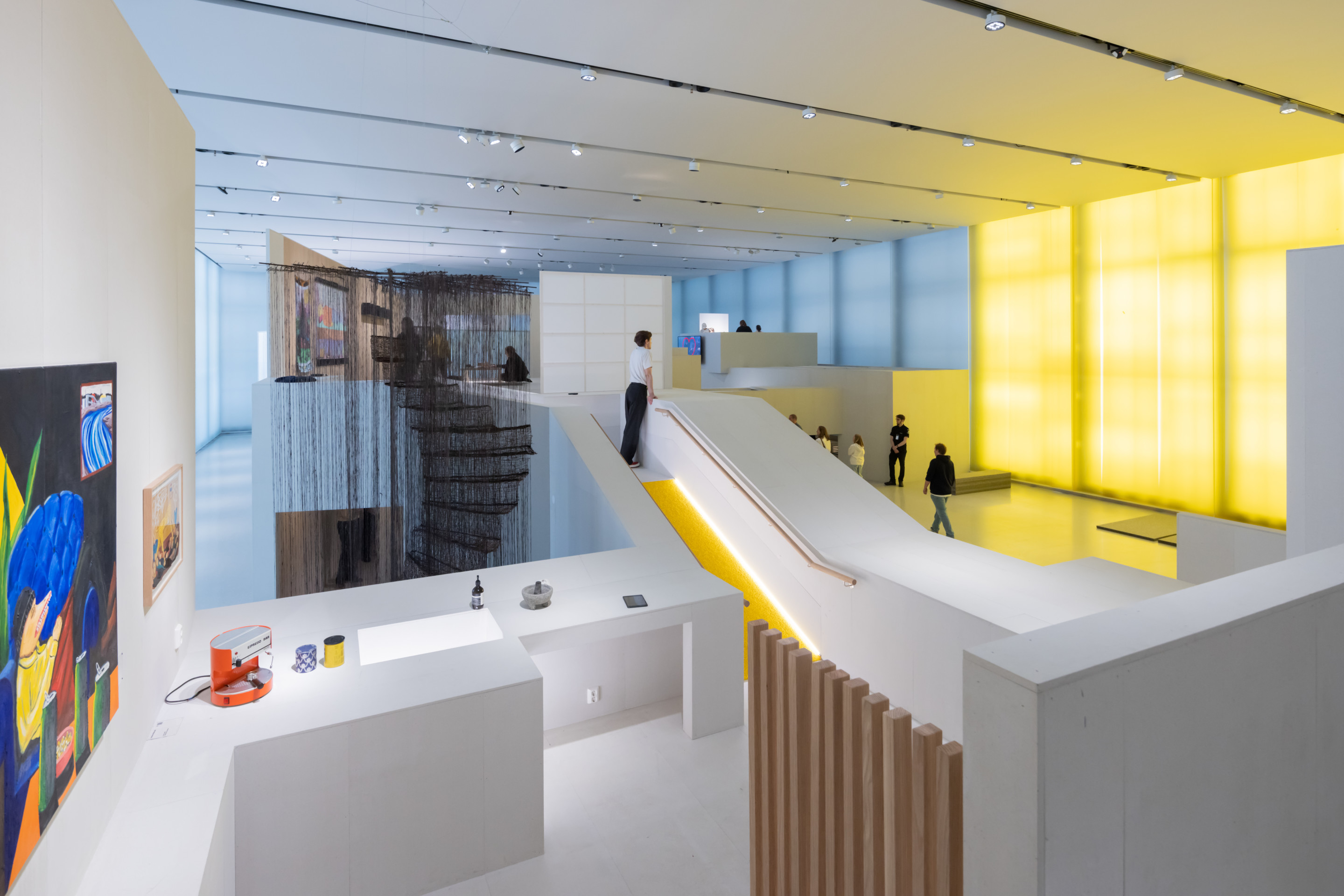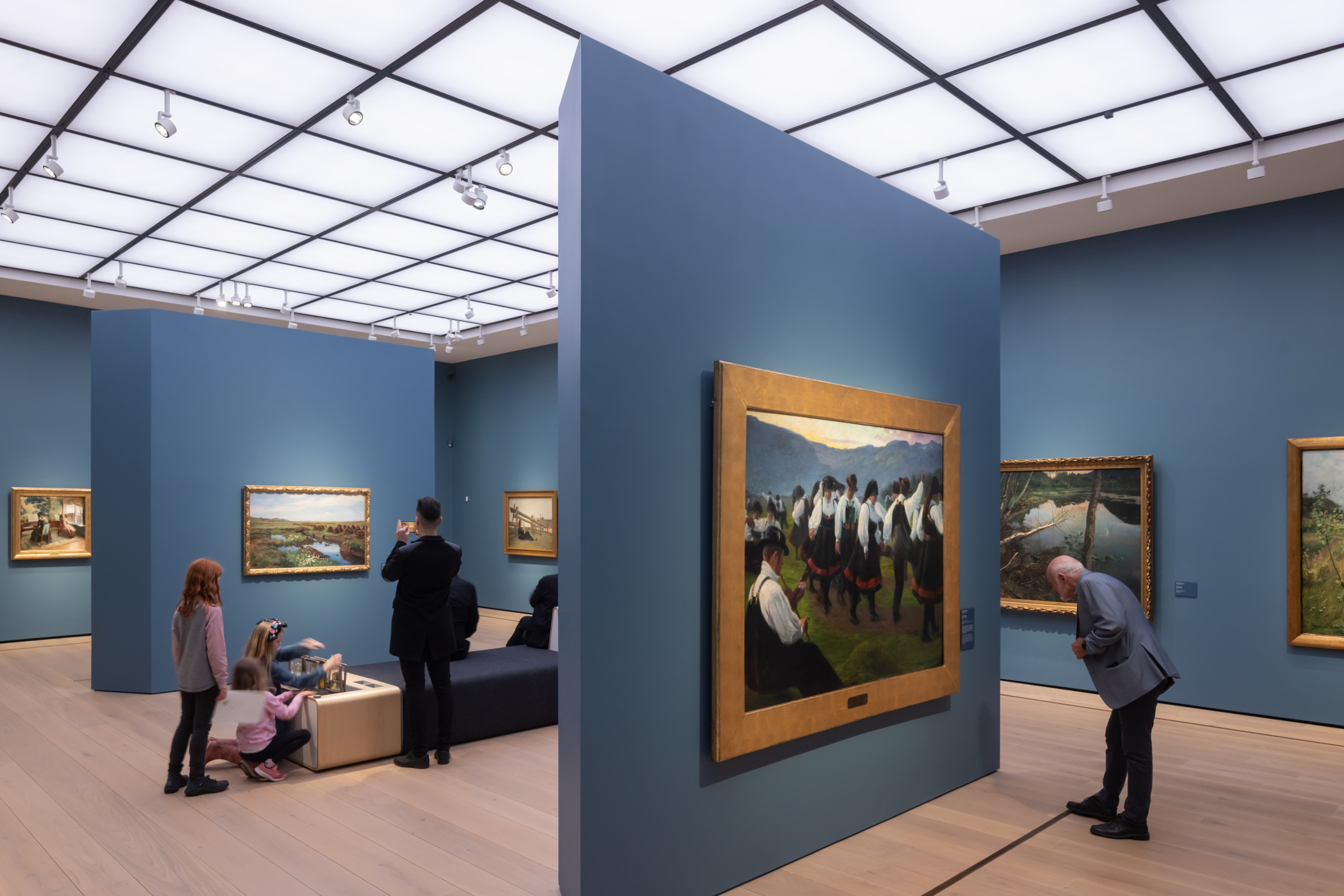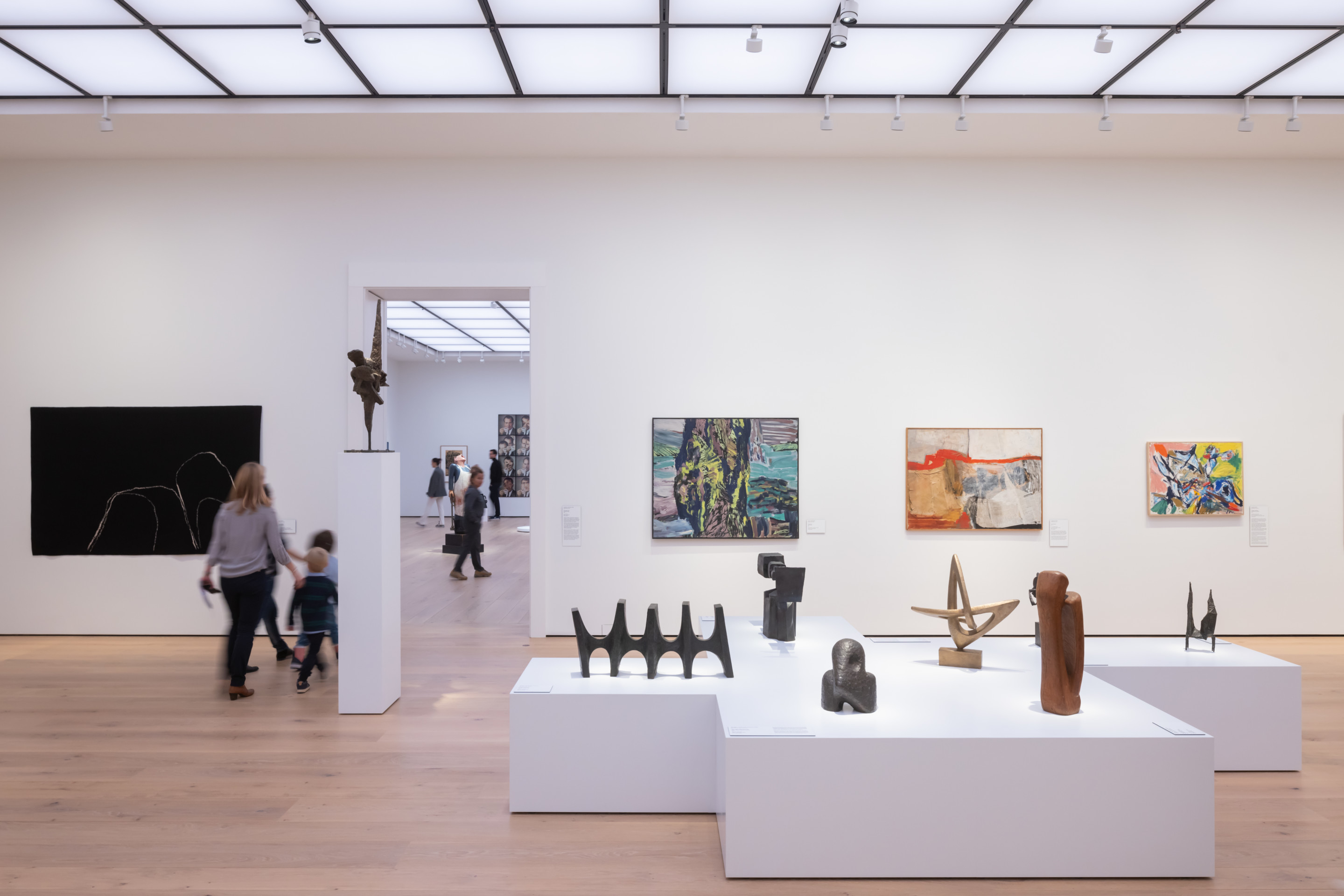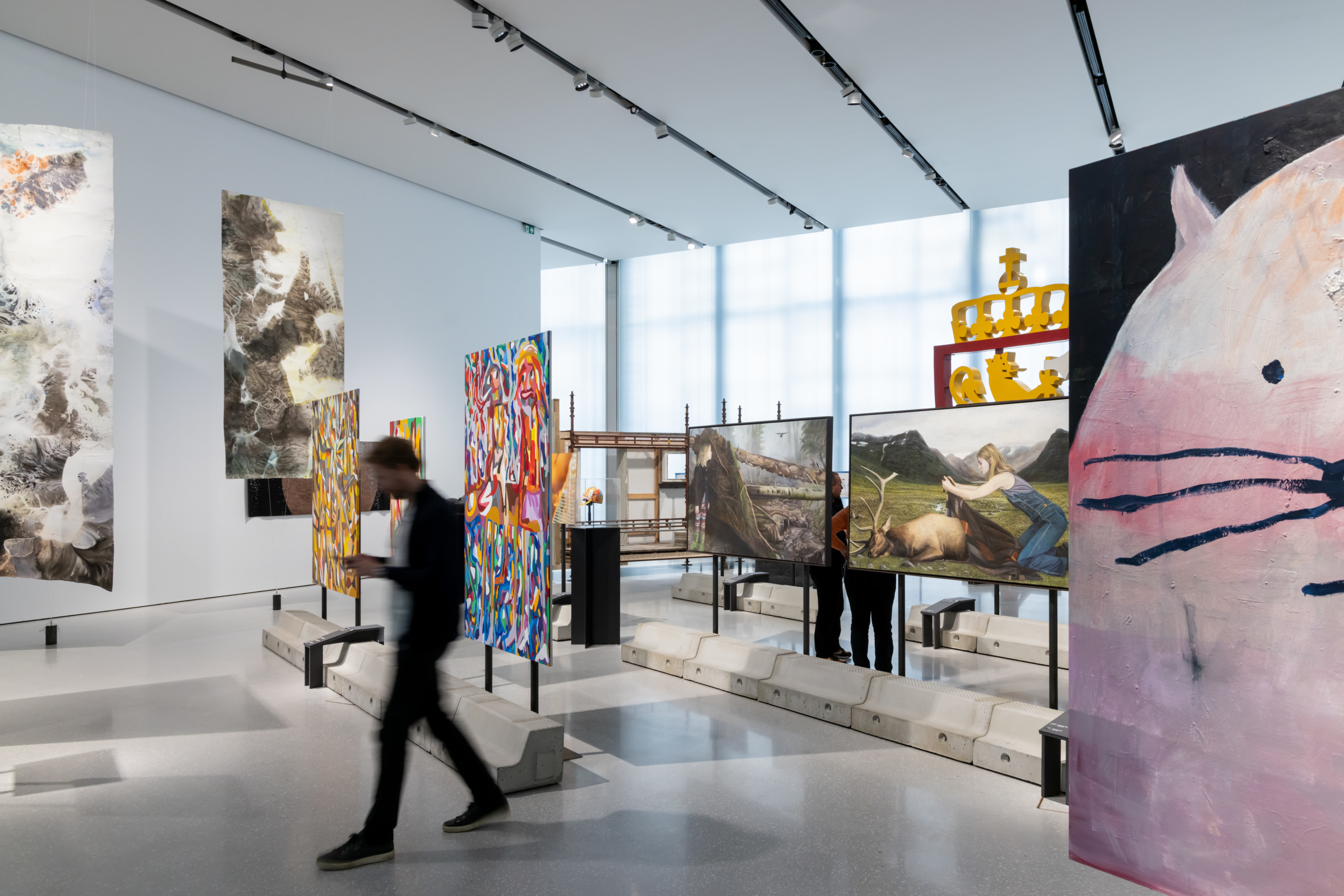Can a massive infusion of state money and high-end cultural openings turn Oslo into the “art capital of Europe”? The Norwegian government is betting on it. Its latest wager is the $626 million National Museum of Norway, which opened to the public on June 11.
Created by agglomerating Norway’s Museum of Architecture, Museum of Industrial Art, Museum of Contemporary Art, and National Gallery, the new National Museum (Nasjonalmuseet) holds a diverse collection of objects. How do you design a building that presents 6,500 pieces from a historical collection of 400,000 items while also carving out space for contemporary exhibitions? For the Naples, Italy–based Kleihues + Schuwerk Architects (and exhibition designers Guicciardini & Magni Architetti), ostentatious design was to be avoided. Its solution, selected as the winner of an international design competition in 2010, blends minimalist stylings with local materials and creates enough density to encourage repeated returns. Time scales vary: To house a collection whose artifacts span thousands of years, Kleihues + Schuwerk Architects cofounder Klaus Schuwerk told AN during a tour, the museum is “meant to last the next 200 years.” Now the largest art museum in the Nordics, the boxy downtown complex is surprisingly unassuming, a quality that might be the key to its longevity.
Deriding the Guggenheim’s locations and other “flashy” institutions as singular gestures devoid of curatorial consideration, Schuwerk explained that the National Museum was conceived to not overshadow Oslo’s city landscape. Consequently, it slithers rather than looms. Its 588,000 square feet (with 140,000 square feet of galleries) fades from view, even from two blocks away. This impressive disappearing trick preserves views of the adjacent brick city hall designed by Arnstein Arneberg and Magnus Poulsson, and the harbor beyond.

Facing the active Aker Brygge waterfront, the overall L-shaped scheme masses around a public courtyard across from the bright yellow Nobel Peace Center. The ground-level facades, up to four stories in height, are clad in locally quarried slate tiles cut vertically rather than horizontally, which creates a sedimentary-like elevation reminiscent of an exposed cliffside. This rear section holds back-of-house functions, including offices, meeting rooms, conservation labs, and more, directing the public to enter from the fronting plaza. To counterbalance the heaviness of the majority-dark-stone exterior, white limestone floors, inspired by the Louvre, were installed underfoot on the first floor, while white oak lines the second level.
Floating above the slate podium, the museum’s crown jewel glows brightly, at least from the outside: The 426-foot-long, 23-foot-tall Light Hall, set back from the third-story roof deck, intentionally stands in stark relief to the rest of the project thanks to a facade of paper-thin, banded marble tiles, each encased in glass for structural stability.
Inside this long hall, floor-to-ceiling panes of translucent glass obfuscate the marble to uniformly diffuse the incoming natural light. The move darkens the interior—if it’s dim on a sunny summer’s day, one wonders about illumination during Norway’s long winters. There’s no way to hang art from the wall, so each piece shown in the Light Hall must be strung from the ceiling or anchored to the floor instead. The vast, uninterrupted expanse provides plenty of space for large installations, but simultaneously overwhelms.

It’s easy (and appropriate) to compare the Light Hall to Gordon Bunshaft’s 1963 Beinecke Library at Yale University, as Schuwerk cited influences from 20th-century modernists. In particular, he cited Mies van der Rohe as an inspiration, a nod noticeable in the broad Rationalist floorplans and the minimalist aesthetic throughout. Still, there are some bottlenecks. While the first two floors classically arrange 3,000 years of art, design, and architecture objects across 86 rooms in chronological order, the L-shaped floor plates unfortunately lead to a somewhat nonlinear flow. As the circulation snakes back on itself, it’s too easy to drift from a room holding the dresses of Norway’s queens into a showcase of industrial design in the 1960s.
While the new National Museum nods to the city’s boxy midcentury Functionalist buildings like the nearby city hall and the naturally lit Kunstnernes Hus, designed by Herman Munthe-Kaas and Gudolf Blakstad, its architecture explicitly rebukes Oslo’s recent individualist, Rotterdam-esque building boom. Schuwerk took particular aim at the MUNCH, a crooked museum tower wrapped in perforated metal panels. Designed by estudio Herreros, it opened last October after two years of delays to generally poor reviews. Built for approximately $260 million, the new home of the Munch Museum ferries visitors to sky-high galleries in crisscrossing escalators through a central atrium and is provocative in exactly the ways the National Museum is not. It sits alone on a plaza along the water’s edge much like the nearby Deichman Library, Oslo’s new main branch, which opened in 2020. Designed by Atelier Oslo and Lundhagem, the glassy library’s stepped cantilever juts out over a Martin Puryear sculpture in the plaza below, dwarfing Snøhetta’s sloping Oslo Opera House. (Its lurking form didn’t stop the International Federation of Library Associations and Institutions from naming it the world’s best new public library last year.)

These three institutions opened in sequence after years of delays—COVID-related as well as budgetary. The National Museum, originally anticipated for completion in 2019, then 2020, is clearly intended to be the capstone. Now done, it emerges into an alien cultural, political, and artistic landscape. Can the Nasjonalmuseet entice as many visitors as the Norwegian government hopes?
Residents and tourists alike who make the trip will find a lot to enjoy, though the firehose of history and culture is too much to absorb in one day. Minor distractions, like the circulation, don’t help: The English wall didactics contained typos, and an approximately 2-inch gap between the roof pavers and the parapets, intended for stormwater drainage, is an inelegant and eminently noticeable solution. Still, touches like the sunken rooftop display rooms that hide large-scale sculptures, or the 32 interactive “activity benches” throughout the building are delightful surprises. The heavier classical styling juxtaposes lighter expressions of contemporary Scandinavian design throughout, a move that keeps the complex from feeling foreboding.

Installed in the Light Hall through September, I Call It Art, the museum’s inaugural exhibition, showcases 147 Norwegian artists who have never been shown in a national museum before. The spread runs the gamut from traditional paintings and sculptures up to fully occupiable environments—one micro-gallery, containing sculptures from artist Markus Li Stensrud, and André Tehrani’s site-specific mural Perception Management Display Unit (Alabaster) w/ Two Paintings for Target Audience 19-25 y/o, is staffed with its own attendant. (After the show closes, larger retrospectives of internationally famous artists are scheduled to follow through 2025.) With video and audio installations that bleed into one another, the opening show is cacophonous.
Still, it, like the rest of what’s on display throughout the museum, deals with important subjects: The first artwork visitors see when entering the building is Pile ó Sápmi Supreme by Máret Ánne Sara, a poignant introduction to the main collection. A quilt of reindeer skulls that have been shot through the head, the piece is a reminder of the brutal pushback the Sámi people faced from the Norwegian government after protesting for their land and reindeer-herding rights. The oppression of the Sámi by the Norwegian government is discussed with refreshing candor across the permanent collection as well. For an institution tasked with presenting thousands of years of history in the centuries to come, an open reckoning with the past is a tremendous first step.
Jonathan Hilburg is an electronics editor at Reviewed and was previously web editor at The Architect’s Newspaper. He lives in Manhattan and is keenly interested in the intersection of art, architecture, and context.










